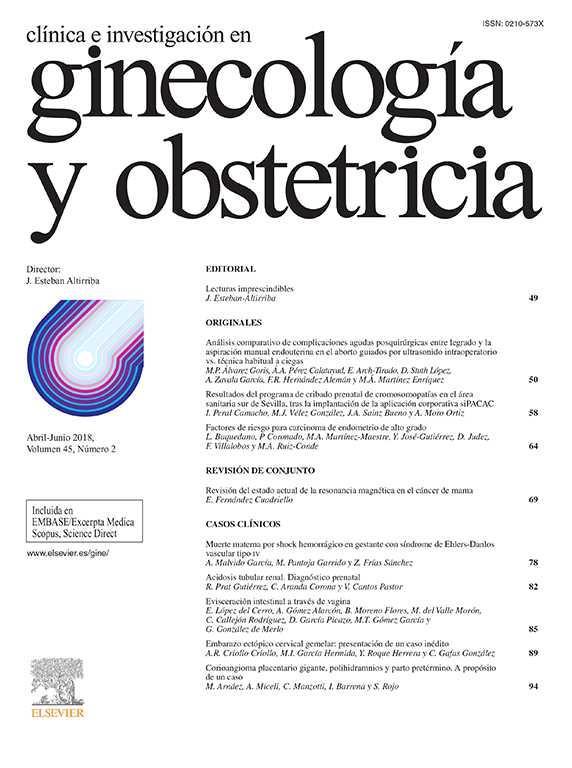La afectación primaria del tracto genital femenino por linfoma no Hodgkin es muy poco frecuente, por lo que no existe un consenso sobre el tratamiento, y por ello presentamos este caso clínico y el tratamiento realizado, así como el pronóstico de nuestra paciente.
Hallazgos clínicosLa paciente presentada es una mujer de 72años que consulta por hemorragia vaginal.
DiagnósticoSe diagnostica de linfoma no Hodgkin extranodal primario de cérvix de inmunofenotipoB de alto grado citológico y elevado índice proliferativo.
Intervenciones terapéuticas y resultadosEl tratamiento de elección fue únicamente quimioterápico. Esta paciente ha presentado una supervivencia libre de enfermedad de 5años. Actualmente se encuentra en seguimiento mediante la realización de controles analíticos anuales.
ConclusiónLos síntomas de este tipo de tumor son altamente inespecíficos y la citología es frecuentemente negativa, por lo que es necesario recurrir a la biopsia. La inmunohistoquímica resulta fundamental tanto para el diagnóstico como para el pronóstico. Existen múltiples técnicas de imagen empleadas tanto para estudio de extensión como para seguimiento, destacando el papel del FDG-PET.
Actualmente parece que el tratamiento más recomendable es la pauta quimioterápica R-CHOP seguida de radioterapia.
El pronóstico en general es bueno, con hasta un 80% de supervivencia a los 5años.
Primary involvement of the female genital tract by non-Hodgkin lymphoma is very rare, so there is no consensus on treatment, and for this reason we present this clinical case and the treatment performed, as well as the prognosis of our patient.
Clinical findingsThe patient presented is a 72-year-old woman who consulted for vaginal bleeding.
DiagnosisPrimary extranodal non-Hodgkin lymphoma of the cervix with immunophenotypeB of high cytological grade and high proliferative index was diagnosed.
Therapeutic interventions and resultsThe treatment of choice was chemotherapy only. This patient has presented a disease-free survival of 5years. It is currently being monitored by carrying out annual analytical controls.
ConclusionThe symptoms of this type of tumor are highly non-specific, as well as cytology is frequently negative, which is why it is necessary to resort to biopsy. Immunohistochemistry is essential for both diagnosis and prognosis. There are multiple imaging techniques used for both extension study and follow-up, highlighting the role of FDG-PET.
It currently seems that the most recommendable treatment is the R-CHOP chemotherapy regimen followed by radiotherapy.
The prognosis is generally good, with up to 80% survival at 5years.









